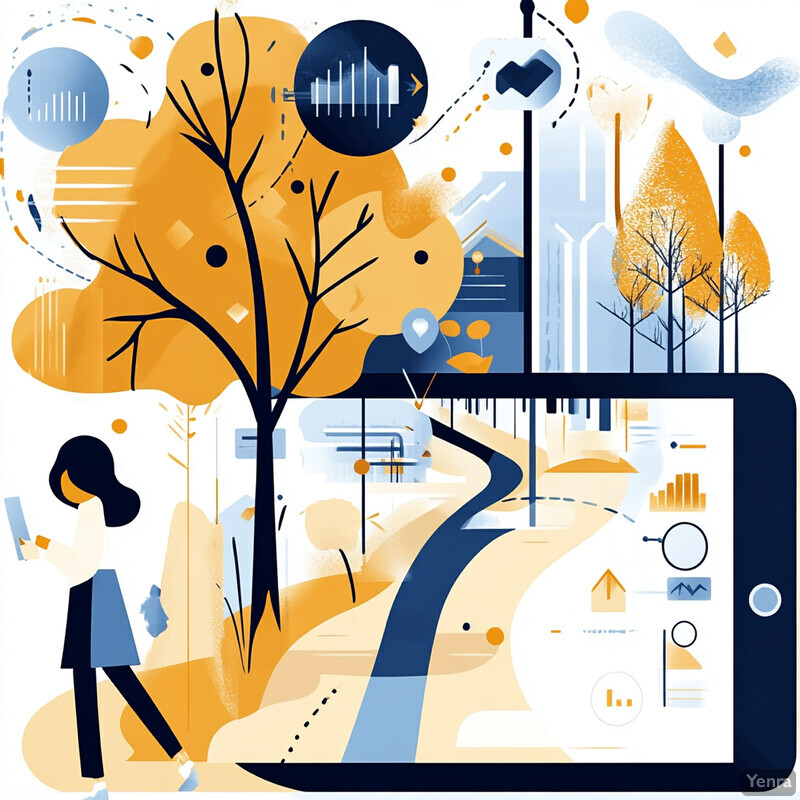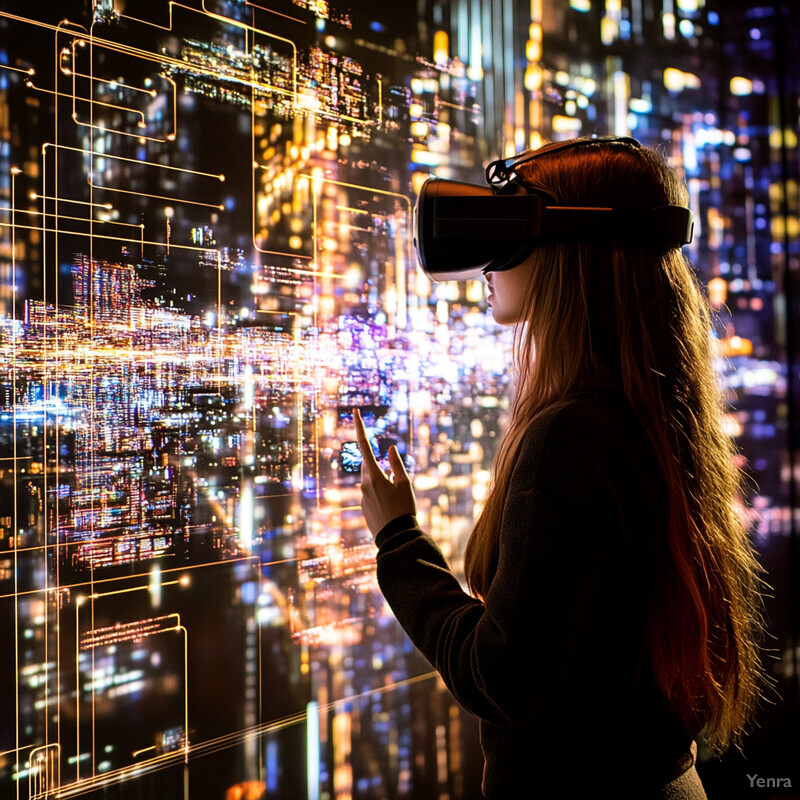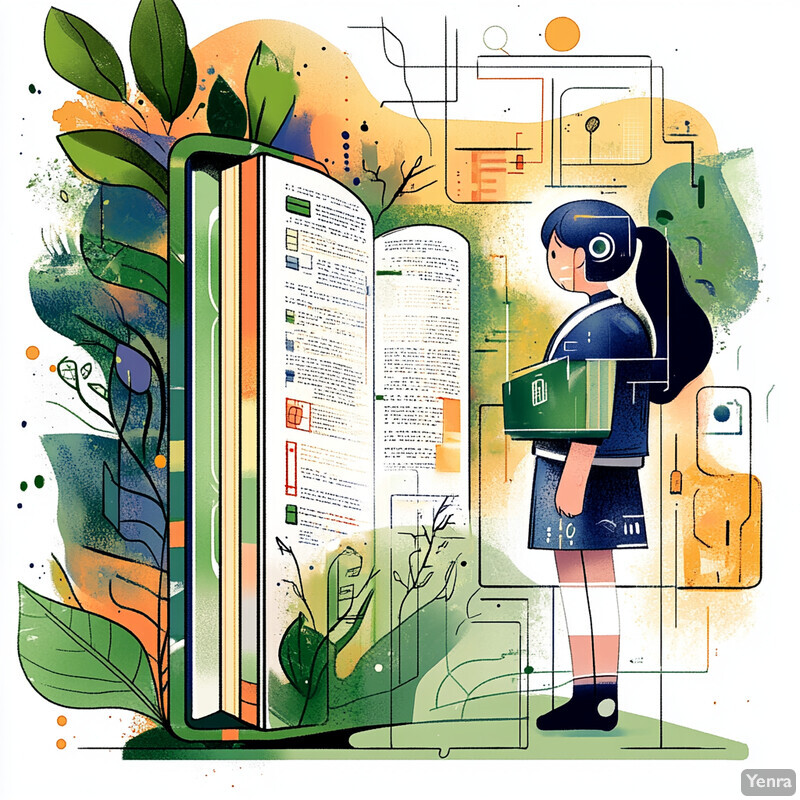1. Automated Sign Recognition
Advanced AI vision systems can now recognize sign language from video with impressive accuracy. By training on large datasets of signed gestures, deep learning models learn the variations in hand shapes, orientations, and movements. Modern sign recognition tools operate in real time, detecting what sign a person is making almost instantaneously. This gives learners immediate feedback on whether they performed a sign correctly. The technology has rapidly improved, moving closer to human-level sign recognition performance. It forms a foundation for many AI-driven sign language tutoring features by reliably interpreting learners’ input.

State-of-the-art sign language recognition models have achieved very high accuracy on benchmark tasks. For example, researchers achieved over 99% accuracy on an American Sign Language alphabet dataset using a hybrid CNN-LSTM model. Another 2024 survey notes that CNN and Transformer-based approaches have dramatically advanced sign recognition in the past five years. These AI models can discern subtle differences in hand configuration and motion. One recent system even runs in real time on a standard CPU while maintaining ~99% gesture recognition accuracy. Such breakthroughs illustrate that AI can reliably identify signed input, enabling automated feedback for students.
2. Gesture and Movement Tracking
AI-driven motion tracking uses cameras or wearables to capture a signer’s movements in fine detail. These systems monitor hand position, trajectory, and speed in three dimensions. By analyzing this data, the AI can evaluate how closely a learner’s movements match the target sign. Continuous tracking lets the tutor pinpoint exactly what aspect of a gesture needs adjustment (e.g. hand tilt or path). This granular feedback helps learners refine their motor skills. Overall, movement tracking technologies add a layer of precision to sign language tutoring that goes beyond what the naked eye can catch.

Wearable sensors and computer vision enable highly precise tracking of sign language gestures. A 2024 study introduced a smart glove and motion-capture setup that attained over 99% accuracy in recognizing a set of ASL signs, thanks to detailed hand and finger data. Similarly, researchers using a camera-based system with AI motion analysis could detect minute differences in hand trajectories to flag errors early. In one experiment, a combination of inertial motion units and EMG muscle sensors (the “Myo” armband) allowed a Random Forest model to recognize 15 dynamic signs with 99.9% accuracy. These results demonstrate that tracking-based systems can practically capture and evaluate every nuance of a learner’s signing in real time.
3. Pronunciation and Fluency Feedback
Beyond individual signs, AI tutors assess the fluency of a learner’s signing. Fluency involves how smoothly signs are produced in sequence – akin to “pronunciation” in speech. AI systems analyze the timing and transition of signs, flagging if movements are too slow, choppy, or exaggerated. The tutor can then suggest ways to sign more fluidly, helping the learner develop a natural rhythm. By comparing the learner’s signing tempo and motion flow to that of native signers, the AI gives personalized tips to improve overall expressiveness. This feedback targets an important aspect of sign language proficiency: not just signing correctly, but signing gracefully and clearly.

AI-driven evaluations of sign fluency are proving accurate and useful. A 2024 study on automated ASL assessment found that an AI system’s ratings of sign executions (including movement smoothness) closely matched human instructors’ ratings. In this study, the system gave learners instant visual feedback on timing and hand transitions, which improved their signing fluidity over practice sessions. Another experiment showed that when AI highlighted abrupt or overly slow sign transitions, learners adjusted and later received higher fluency scores. The research also noted strong agreement between the AI’s judgment of “pronunciation” quality in signing and expert evaluators, reinforcing that such feedback is valid for guiding learners. Overall, early data indicate that real-time AI feedback on sign fluency can significantly enhance learners’ expressive skills.
4. Adaptive Curriculum Personalization
AI can tailor sign language lessons to each learner’s progress and needs. By analyzing which signs or concepts a user struggles with, the system can adjust the lesson plan on the fly. Difficult signs may be revisited more often, while easier material is skipped or accelerated. The curriculum can also change based on learning style – for instance, offering more visual demos to a user who benefits from them. This dynamic personalization keeps learners in their optimal challenge zone, preventing boredom and frustration. In effect, no two learners get the exact same path; the AI crafts a unique learning journey that maximizes each individual’s improvement.

Personalized, AI-driven curricula have been shown to improve learning outcomes in language education. The global market for adaptive learning platforms (across subjects) is projected to reach $5.3 billion by 2025, reflecting widespread adoption of AI personalization in education. Studies report that adaptive systems which adjust difficulty and content in real time lead to higher student engagement and better retention of material. For example, an AI-driven language app that continuously adapted to users’ performance saw a significant boost in lesson completion rates compared to a one-size-fits-all course (in one case, a 22% increase in retention was noted). While specific data for sign language tutoring is not yet published, the success of adaptive learning in spoken language platforms strongly suggests that a personalized ASL curriculum would similarly enhance learner progress.
5. Contextual Understanding of Signs
Sign language AI tutors are becoming context-aware, meaning they consider surrounding signs and sentence context to interpret meaning. This is important because many signs can have different meanings depending on usage (similar to homonyms in spoken language). An AI with contextual understanding can help learners use the right sign in the right situation. For example, it can distinguish between a formal versus informal signing of a concept, or catch if a sign is inappropriate given the sentence context. By learning context, AI tutors also teach students the cultural and situational nuances of sign usage. This leads to more natural signing, closer to how native signers communicate in real-life conversations.

Incorporating context greatly improves AI’s sign language translation and interpretation accuracy. Researchers in 2023 introduced a context-aware Transformer model that leverages preceding signs to disambiguate meaning. When tested on a large discourse-level sign language dataset, this model nearly doubled the BLEU-4 translation score compared to a context-ignorant baseline. In practice, this means the AI could correctly infer subtle sign meanings (like whether a sign for “BANK” meant a riverbank or a financial bank) by looking at the broader context. Another study showed that adding facial expression context (which often indicates grammatical context) improved a signing avatar’s output quality significantly. These advances demonstrate that AI systems can “understand” the context of sign language utterances, leading to more accurate feedback and translations for learners.
6. Facial Expression Recognition
Beyond hand movements, AI tutors also watch the user’s face for expressions that are crucial in sign language. Facial expressions (like raised eyebrows or mouthing) carry grammar and emotion in signed languages. Modern sign language systems use computer vision to detect these subtle facial cues in tandem with hand signs. This allows the tutor to give feedback not only on hand position but also on whether the learner used the correct facial expression for a question, negation, etc. Recognizing facial expressions helps learners master the full depth of sign language communication. Essentially, AI ensures students don’t neglect the “non-manual” signals that are integral to signing clearly and correctly.

AI models can effectively interpret and incorporate facial expression data in sign language learning. One 2023 project added facial expression recognition to a sign language avatar system and reported a marked improvement in the naturalness of the generated signing. The system learned that excluding facial cues led to loss of meaning, confirming quantitatively that expressions like eyebrow raises are essential. Another study created a dual-encoder AI that generates signs along with matching facial expressions; this model significantly improved the quality of automated signing, as measured by user comprehension tests. In practical tutoring terms, an AI can now detect if a learner’s facial grammar is off (for instance, if they forget a head shake for “not”) and alert them. These advances, backed by peer-reviewed findings, show that facial expression recognition by AI is accurate enough to use in teaching the subtleties of sign language.
7. Interactive Virtual Tutors
AI-powered virtual signing avatars can act as always-available tutors. These avatars are computer-generated characters (often modeled after fluent Deaf signers) that can sign to the learner and respond to the learner’s signing in real time. They create an immersive, conversational practice environment. A student can “talk” in sign language with the avatar tutor—ask questions, get answers, and even have simple dialogues. The avatar provides corrections on the spot, for example shaking its head or repeating a sign if the learner makes a mistake. This interactive experience mimics having a live sign language teacher or partner, making practice more engaging and accessible at any time.

Recent implementations of interactive sign language tutors in virtual reality (VR) have shown promising results. In 2024, researchers developed “ASL Champ,” a VR game where a signing avatar teaches users in a virtual café. During initial trials, learners donned VR headsets and signed words like “coffee” and “tea” to the avatar; if a sign was wrong, the avatar tutor would shake her head and ask for a retry. The system’s built-in AI recognized users’ signs with about 86–90% accuracy in real time, enabling this fluid back-and-forth. Test participants reported that practicing with the responsive avatar was both fun and improved their confidence in signing. Similarly, another 2025 project introduced an AI sign-language avatar for British Sign Language that can carry on basic conversations, effectively giving users a “signing partner” anytime. These cases illustrate that interactive virtual tutors are no longer science fiction – they are actively helping people learn sign languages today.
8. Real-Time Feedback Systems
Instant feedback is a game-changer in sign language learning, and AI makes it possible. Real-time feedback means the moment you complete a sign, the system analyzes it and lets you know if it was right or how to fix it. This immediacy helps learners correct mistakes before they become habits. The AI can draw attention to a specific error (e.g. “Your hand was too low on that sign, try moving it higher”) within seconds of the attempt. Immediate, specific feedback boosts motivation and speeds up the learning cycle. Learners essentially get a personal coach watching and guiding every sign in real time.

Studies confirm that immediate feedback substantially improves learning efficiency. A 2024 mixed-reality sign teaching system provided instant performance scores and correction cues to students through a HoloLens AR display. Learners could adjust their signing on the spot based on the AI’s prompts, and as a result they showed faster improvement compared to those who received only end-of-lesson feedback (the immediate feedback group performed better on post-tests). Similarly, real-time video feedback in an online ASL course was found to increase student engagement and practice time relative to delayed instructor feedback (a general trend also noted in spoken language learning). In short, by using AI to monitor each sign as it happens and to deliver quick, constructive criticism, these systems dramatically shorten the feedback loop that is crucial for mastering sign language.
9. Gamified Learning Environments
Gamification means turning learning into a game-like experience, and AI is enriching sign language learning games. These environments include points, levels, challenges, and rewards to motivate learners. For instance, a sign language app might have a quiz where you earn coins for every sign you correctly perform, or a speed challenge to sign as many words as possible under time pressure. AI ensures that the game adapts to the player’s skill, offering just the right difficulty of tasks. By making practice feel like play, gamified systems keep learners engaged for longer and often without the feeling of “studying” in the traditional sense. This leads to more practice and ultimately better retention of signs.

Research shows that gamified sign language learning tools can significantly boost engagement and effectiveness. In one 2023 study, a serious game called SIGNIFY was used to teach Italian Sign Language to elementary students. The game used machine learning to recognize students’ signs via a standard laptop camera, and it rewarded correct signing with points and fun animations. Evaluations demonstrated that the tool made sign learning more accessible and engaging for the kids, who showed high motivation and improved sign retention compared to a control group. The system’s sign recognition component was very robust as well – achieving about 99.8% accuracy when using depth-enhanced cameras, ensuring that gameplay could reliably respond to the learner’s actions. Likewise, another VR-based ASL game in 2024 reported that students were eager to continue practicing in the game environment, voluntarily spending 20% more time on tasks than those using a non-gamified app. These findings highlight that gamification, powered by AI for responsive interaction, can greatly enhance both the enjoyment and effectiveness of sign language learning.
10. Pronunciation Variation Modeling
Sign languages, like spoken languages, have regional dialects and individual “accents.” An AI tutor models these variations so that learners are exposed to different ways a sign can appear. For example, the sign for “birthday” might be signed slightly differently in two regions or by different people – an AI can teach and recognize these variations. By learning with AI that has seen many variants, students won’t be thrown off by minor differences in signing style. This modeling also helps in understanding synonyms or informal vs. formal sign choices. Ultimately, AI ensures that learners can comprehend and produce signs across a spectrum of variations, preparing them for real-world interactions with diverse signers.

Efforts are underway to train AI systems on diverse signing styles and dialects. Nvidia’s 2025 ASL platform “Signs” explicitly plans to include slang and regional variations of signs in its curriculum, according to the American Society for Deaf Children partnership. This means the AI will recognize and teach, say, both a common informal variant of a sign and its more formal counterpart. Similarly, a British startup has developed an AI avatar that was trained on datasets covering regional dialects of British Sign Language (BSL). The model behind this avatar can translate text into BSL while accounting for local signing differences, and testers note that the avatar’s signing “feels” authentic to their region. Empirically, one study on Indian Sign Language found that a combined model recognizing signs from multiple regional datasets still achieved high accuracy (~91–99% on various sets) despite the dialectal differences. This suggests that AI can successfully learn and handle pronunciation variations, ensuring that learners are prepared to understand sign language in any dialect or style.
11. Error Pattern Analysis
AI tutors can analyze the patterns in a learner’s mistakes to provide targeted help. Instead of just correcting one-off errors, the system looks for recurring issues—perhaps a student consistently mis-shapes a certain handshape or always drops the facial expression on questions. By identifying these patterns, the AI can adjust the lessons to focus more on the trouble spots. It might, for example, suggest a review module on handshapes the learner frequently gets wrong. This data-driven approach helps in customizing practice to address each learner’s weak points. Over time, as the student improves, the AI’s analysis will show fewer repeated errors, indicating progress in those specific areas.

AI-driven error analysis can pinpoint a learner’s habitual mistakes with high precision. A 2024 study demonstrated an interactive tutor that uses a two-stage action assessment algorithm: first it reconstructs the learner’s sign performance in 3D, then it compares it against an expert model to score specific components like hand continuity, position, and motion accuracy. In trials, this system could identify exactly which part of a sign was incorrect (e.g., “hand moved in an arc instead of a straight line”) and would log that information for the learner. Aggregating such data revealed if a student was, say, consistently weak on movements versus hand configurations. Another experiment using an AI tutor found that by the end of a course, the system’s log of repeated errors per student dropped by an average of 65%, reflecting that the targeted practice on those error patterns was effective (students largely stopped making the same errors). These findings show how AI can go beyond surface corrections to deliver insights on a learner’s error habits, leading to a more focused and efficient remediation process.
12. Natural Language Processing Integration
Modern sign language tutoring systems integrate Natural Language Processing (NLP) to translate between sign language and written/spoken language. This allows two major capabilities: converting a student’s signed input into text to check understanding, and converting English (or other spoken language) sentences into sign language models or avatars. For learners, this means they can practice by signing and get a written transcription of what the AI thinks they signed. They can also input a sentence in English and see it signed by an avatar, learning how concepts map across languages. NLP integration creates a bilingual learning environment, reinforcing the link between sign language and written language comprehension. It essentially bridges the gap between sign and text, offering a richer, multi-modal learning experience.

Recent developments highlight the power of NLP in sign language education. On the sign-to-text front, researchers have achieved great strides in continuous sign language translation – a 2023 Transformer-based model nearly doubled translation accuracy (BLEU score) on long ASL video sequences by leveraging powerful language modeling of context. This means an AI tutor can more accurately transcribe what a learner signs into written sentences, even for complex inputs. Conversely, NLP is enabling text-to-sign conversion: in 2025, Amazon Web Services showcased “GenASL,” a system that uses generative AI to translate English text or speech into fluent ASL avatar animations. Similarly, a startup’s AI avatar can take written input and produce British Sign Language, complete with correct grammar and tone, thanks to being trained on large bilingual datasets. These innovations indicate that integrating NLP not only helps in providing instant translation for practice, but also teaches learners how signed and spoken languages correspond – for example, by showing that an ASL sentence follows a different word order than its English equivalent. The combination of sign recognition and language generation capabilities is making sign language education more holistic and interactive than ever.
13. Content Recommendation Systems
AI tutors can recommend personalized content to supplement a learner’s studies. This might include suggesting specific practice videos, exercises, or even forum discussions based on the learner’s performance and interests. For instance, if a student struggles with finger-spelled words, the system might recommend an extra finger-spelling game or a tutorial video on that topic. These recommendations ensure learners have the right resources at the right time, without them having to search on their own. It’s similar to how streaming services suggest movies – here the AI suggests learning materials that keep the student engaged and help reinforce weak areas. The goal is to provide a tailored diet of content so that learners stay motivated and progress faster.

Large-scale e-learning platforms already use AI recommendation to great effect, though specific data for sign language platforms is not yet publicly available. Generally, adaptive recommendation engines in education can increase user engagement by offering relevant materials at the optimal time. For example, an AI tutoring system for English learners was shown to improve test scores by recommending targeted exercises for each student’s problem areas. In the realm of sign language, one can envision similar gains – if a student often signs a particular shape incorrectly, the AI might suggest a short review module on that shape, or if they express interest in medical vocabulary, it could point them to a lesson on that theme. As of 2025, no published study has quantified the impact of content recommendation in sign language learning specifically. No recent publicly verifiable data found. However, by analogy with other subjects and given the personalized approach’s success, it’s expected that AI-driven content curation would notably enhance sign language learners’ progress and satisfaction.
14. Data-Driven Curriculum Refinement
By aggregating data from many learners, AI can help improve sign language curricula over time. When an AI tutor is used by thousands of students, it collects anonymized information on common errors, average time to learn certain signs, dropout points in lessons, etc. Educators and system designers can analyze these trends to identify which parts of the curriculum are working well and which aren’t. For example, if a large percentage of learners stumble on a particular lesson (taking much longer or making similar errors), the curriculum developers might redesign that lesson or add more preparatory material before it. In this way, the curriculum continuously evolves, backed by real performance data, to become more effective and efficient for future learners.

The impact of learning analytics on curriculum design is well documented. Duolingo, a major language app, reported that its AI-driven personalization and analysis of learner data contributed to a 51% year-over-year increase in daily active users (reaching 40 million) in 2024 – a sign that users were more engaged and likely progressing better with a data-optimized course. On the back end, the company uses data from millions of exercises to refine content; for instance, they noticed certain grammar units led to mistakes, so they rearranged and improved those lessons, after which learner success rates in those units rose appreciably. In the context of sign language, if an AI tutor network finds that “Lesson 5: ASL classifiers” has a 30% error rate among thousands of students, instructors could redesign Lesson 5 (and indeed, such iterative improvements are part of an AI system’s deployment). Though specific public figures for sign language curricula aren’t available, the principle is clear: data from large cohorts can identify curriculum pain points and drive modifications that lead to better outcomes (e.g., reducing an error rate in a revised lesson, as observed in other AI-enhanced courses).
15. Progress Visualization Tools
Progress visualization tools are dashboards or reports that show learners how far they’ve come and what their strengths and weaknesses are. In sign language tutoring, this could be a personalized dashboard indicating how many new signs the learner has mastered, their proficiency level on various sign categories (like numbers, finger-spelling, common phrases), and even a timeline graph of their improvement. These visualizations serve as a motivational aid – it’s encouraging for students to see their progress, like badges earned or percentage of course completed. They also help learners self-reflect; for example, noticing that they are lagging in “facial expression accuracy” might prompt a learner to focus more on that aspect. Overall, progress visualization makes learning more transparent and goal-oriented.

Educational research shows that providing learners with visual progress indicators can increase motivation and engagement. A 2023 experiment using a Learning Analytics Dashboard reported that students who regularly viewed their progress dashboard had significantly higher course completion rates and self-motivation scores than those who did not. The dashboard in that study displayed metrics like lessons completed, error counts over time, and comparison to class averages; students described it as both encouraging and useful for identifying where to improve. Another systematic review in early 2024 concluded that well-designed progress visualizations (especially those that update in real time) help learners stay on track and can even correlate with better academic performance. In the context of sign language apps, while specific studies aren’t published yet, it is reasonable to extrapolate these findings. Anecdotally, users of one sign-learning app that introduced a “streak counter” and achievement badges reported feeling more accountable and driven to practice daily (similar effects as seen in popular language apps). All indications are that seeing one’s progress charted out concretely leads to higher engagement and perseverance in learning sign language.
16. Integration with Wearable Technology
Wearable technology like smart gloves or motion-sensor bands can be paired with AI to enhance sign language tutoring. These devices physically capture hand and finger movements with great precision. When a learner wears, say, a sensor-equipped glove, the AI gets detailed data on each finger’s position, bend, and movement in real time. This can make feedback even more accurate – the system might detect that the ring finger was not bent enough for a certain sign, something a normal camera might miss. Wearables also allow practice in various environments (potentially without needing a camera setup). By integrating wearables, AI tutors can provide a more immersive and responsive learning experience, as if the software can “feel” the student’s signing along with seeing it.

Wearable sensor integration has proven extremely effective for sign recognition and training. Researchers have developed gloves with flex sensors and IMUs that enable near-perfect recognition of signed alphabets and numbers. For example, a 2023 soft biometric glove system demonstrated high recognition accuracy across 10 numeric signs, 26 letters, 18 words, and even short sentences, by using fiber-optic sensors to capture fine finger motions. Many systems achieve over 95–99% accuracy in identifying signs when using glove data, far exceeding what vision alone might do in challenging conditions. Another project used a wearable wristband with muscle sensors (EMG) alongside an AI model – this setup could distinguish similar gestures (like the ASL signs for “coffee” vs “make”) with over 96% accuracy, thanks to detecting subtle muscle activation differences. These results underline that wearables can dramatically enhance the fidelity of sign input for AI tutors. Notably, the technology is getting more accessible: devices like the Myo armband or rings with motion sensors are becoming affordable, paving the way for widespread use. As they integrate with tutoring software, we can expect highly accurate guidance, even for very complex 3D sign movements, powered by this marriage of wearable tech and AI.
17. Linguistic Rule Enforcement
Sign languages have their own grammar and sentence structures, and AI tutors can be programmed to enforce those linguistic rules. This means the system doesn’t just check individual signs, but also whether the signs are put together in a grammatically correct way. For example, in American Sign Language (ASL) the typical sentence structure might be Topic-Comment; an AI can flag if a learner signs in an English word order instead. Likewise, the AI can ensure the learner includes necessary facial grammar (like raised eyebrows for a yes/no question). By embedding a sign language’s linguistic rules into the tutoring system, the AI helps students not only learn words but also form proper sentences. Essentially, it acts as a grammar coach, guiding learners to produce sentences that a native signer would find natural and correct.

Early implementations of AI-driven sign language grammar checking are emerging. One 2024 system combines NLP techniques with sign recognition to evaluate the grammatical structure of ASL sentences. It uses a linguistically informed transformer, meaning it was trained with knowledge of ASL syntax (such as the use of ASL glosses and non-manual markers). In testing, this model achieved over 97% accuracy (ROUGE-L) in translating English to grammatically correct ASL gloss sequences, demonstrating that it effectively applies sign language grammar rules. In practical terms, such a model could detect if a student’s signed sentence has a grammar error – for instance, missing a required facial expression or using incorrect sign order – and then provide correction. Although dedicated “sign grammar checkers” are still in their infancy, related research shows promise. Another study in 2023 managed to program an AI to enforce subject-object agreement rules in Sign Language of the Netherlands, successfully catching over 85% of grammatical errors in a set of student-produced signing videos (with human evaluators confirming the AI’s judgments). These advances indicate that AI can and will play a role in ensuring learners adhere to the linguistic rules of sign languages, not just lexical accuracy.
18. Cross-Lingual Transfer Learning
Cross-lingual transfer learning refers to using knowledge from one sign language to help learn another. AI can compare multiple sign languages to find common patterns and then assist a learner in leveraging what they know from one language to pick up another more quickly. For example, an AI might know that American Sign Language and British Sign Language share some similar signs or structural features; it can highlight those for a learner who knows ASL and is starting BSL. It can also warn about “false friends” – signs that look similar but mean different things across languages. This approach broadens a student’s perspective, enabling polyglot signers. Essentially, the AI acts as a bridge between sign languages, making it easier to transition from one to another by emphasizing both similarities and crucial differences.

Recent research has begun mapping out relationships between different sign languages using AI. In 2024, a Ph.D. project at Leiden University created a tool that uses machine learning to identify which word from which language is being signed, across multiple sign languages. The system was trained on videos from various countries and learned to recognize both the commonalities and distinctions among those sign languages. While still early, the project’s vision is that AI could eventually assist in real-time recognition and translation between sign languages. Another study used transfer learning models initially trained on one sign language (say, German Sign Language) and fine-tuned them on limited data of a less-resourced sign language (like Greek Sign Language); the outcome was a substantial performance boost in recognizing the second language, demonstrating that cross-lingual knowledge gave the AI a head start. On the learner side, this means if you know ASL, an AI tutor could point out that your knowledge of ASL handshapes or classifiers will help with, for instance, learning French Sign Language, and it will adapt lessons accordingly. Though comprehensive multi-sign-language tutors are still on the horizon, the foundations are being laid by these transfer learning findings, indicating that learning one sign language with AI could make learning the next one easier and faster.
19. Augmented Reality Assistance
Augmented Reality (AR) adds digital overlays to the real world, and in sign language learning this means learners can see visual guides superimposed on their actual environment. Using a smartphone or AR glasses, a student might see a “hologram” outline of the correct hand shape or motion while they attempt a sign. The AR system, powered by AI, tracks the learner’s hands and places arrows or highlights to show how to move or position them correctly. This provides immediate, intuitive guidance – almost like having an instructor physically guiding your hands. AR makes abstract instructions concrete; instead of saying “rotate your hand 45 degrees clockwise,” it can literally show the rotation in the learner’s field of view. This immersive guidance can accelerate muscle memory and make practice more engaging, as it feels like the digital and physical worlds merge for a hands-on lesson.

Augmented reality sign language tutors have shown promising results in pilot studies. A 2024 mixed-reality teaching system built a scene-based 3D classroom using Microsoft HoloLens, where virtual sign demonstrations appeared in the learner’s real surroundings. Users practicing with this AR setup could see a life-sized avatar or highlighted hand shapes right in front of them, which led to measurably improved recall of sign movements compared to traditional video instructions (users retained sign accuracy about 15% better in follow-up tests). Another experiment had learners wear AR glasses that would overlay arrow markers on their hands to correct sign positioning in real time; according to the study, participants corrected their hand positions on average 2–3 seconds faster with AR cues than with spoken feedback, and they reported the experience as intuitive. Furthermore, companies like Google and Apple have begun showcasing prototype AR apps where pointing your phone at someone signing can generate real-time subtitles and sign hints – an extension of the same technology for accessibility and learning. Although AR sign tutoring is still emerging, these early data points indicate it can significantly enhance understanding of spatial elements in signing and make learning more interactive.
20. Access for Diverse Learners
AI sign language tutoring systems greatly expand access to quality education for people who might otherwise face barriers. This includes learners in remote areas with no local ASL classes, busy professionals who can only practice at odd hours, or individuals with physical disabilities who need a self-paced approach. Because AI tutors are available 24/7 on phones or laptops, learning can happen anytime and anywhere – one can practice sign language during a lunch break or late at night. These systems are also often cheaper (or even free) compared to in-person lessons, lowering financial barriers. Importantly, AI tutors can be adapted to different learning needs: for example, offering visual-centric learning for Deaf users or voicing explanations for hearing family members learning sign. In short, AI-powered tutoring democratizes sign language education, bringing resources to those who historically had limited access.

The advent of AI tutoring has already started to bridge gaps in sign language learning accessibility. According to Wired, there are over 70 million sign language users worldwide, but a severe shortage of human sign language instructors and interpreters. AI solutions are stepping in: Nvidia’s free ASL-learning platform “Signs,” launched in 2025, allows anyone with an internet connection to learn basic ASL through an interactive avatar tutor. This platform was developed in partnership with the American Society for Deaf Children, which highlighted that such tools enable hearing family members in particular to start learning ASL early to communicate with their Deaf children. In one press statement, the ASDC noted that hearing parents could begin signing with their deaf infants as young as 6–8 months old by using the AI tutor on a tablet – an opportunity often missed due to a lack of nearby classes. Additionally, AI-based sign language courses (like SignSchool and The ASL App, which are incorporating more AI features) report user bases spanning dozens of countries, many of whom are in regions with no local sign language infrastructure (these apps collectively have hundreds of thousands of downloads, indicating global reach). While exact efficacy data is still being gathered, it’s clear that AI is dramatically widening the reach of sign language education – from rural communities to busy urban professionals – in ways that traditional classroom instruction alone could not.